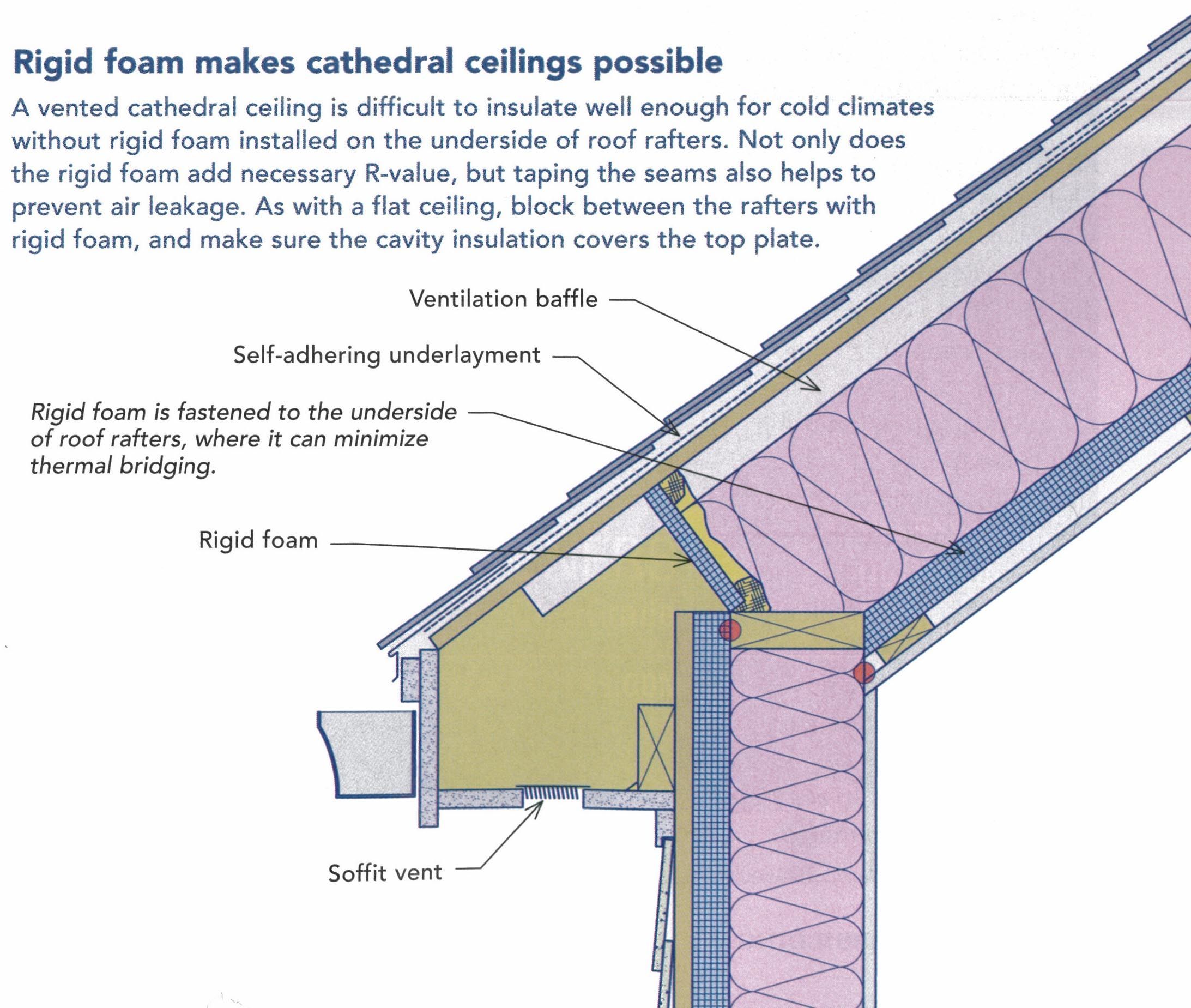A roof over a vented unconditioned attic does not need to include any insulation.
How to install rigid foam on top of roof sheathing.
A helpful hint for installation is to use a straight edge along the cut line to ensure the panels fit best.
If the foam is too thin the roof sheathing will be cold which can lead to problems with condensation or moisture accumulation.
Put down roof felt.
Use the irc to determine foam thickness.
Repeat along all of the edges across the entire roof.
Remove existing roofing and non adhered underlayment to expose roof sheathing.
Use a straight edge knife or utility knife to cut the panels to size.
However if you want to use rigid foam in place of wood sheathing it needs additional bracing to prevent racking.
My roofing is steel and is designed to be mounted on battens purlins.
Create an unvented roof putting foam on top of the sheathing.
Nail it around the edges with roofing nails.
Most foam sheathed walls include a rain screen gap between the foam and the siding.
Install rigid insulation board in multiple layers with joints offset vertically and horizontally between adjacent layers.
Start at the bottom of the roof and place the first piece of rigid foam insulation against the metal flashing starting at the center line.
Foam sheathing can help protect walls from moisture problems but only if it is thick enough and installed properly.
How to install rigid foam on top of roof sheathing updated on december 15 2017 with information on the u factor alternative.
If you choose to install rigid foam on top of your roof sheathing the foam has to be thick enough to keep the lower layer of roof sheathing above the dew point in the winter.
Interior moisture can enter the wall from air leaks or diffusion through the wall finish.
The foam panels need to be secured to the roof around every 12 inches for safety.
After the foam is tacked in place temporarily with a few nails it is secured in place with vertical 1 3 or 1 4 strapping that is screwed through the foam to the underlying studs.
Apply continuous air control membrane to existing roof sheathing or implement continuous air control at roof sheathing.
From what i ve learned here seal the seams of the osb roof sheathing with zip system tape to create an air tight barrier.
1 use a thick enough layer of foam to minimize condensation on its interior face.

